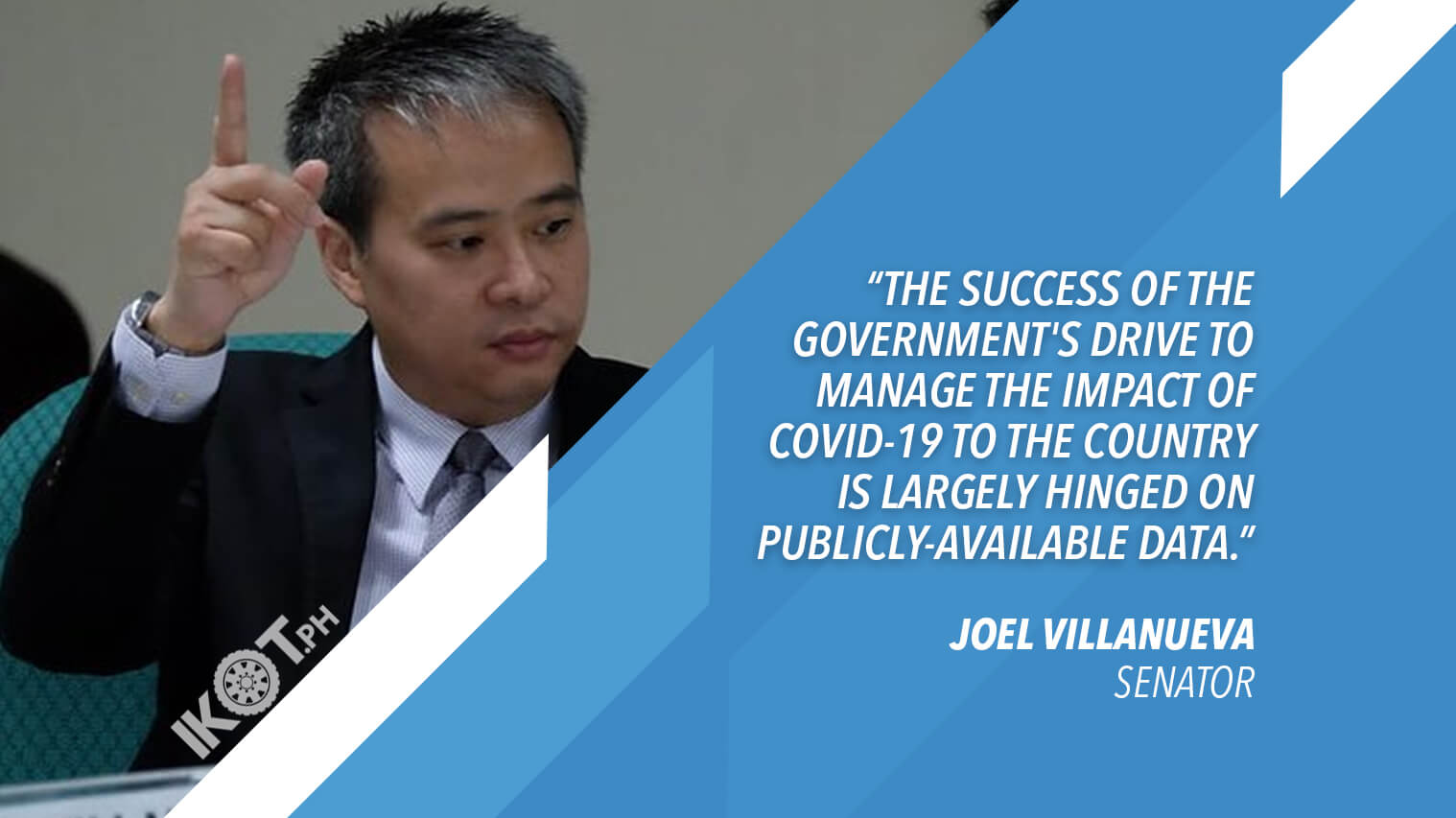Senator Joel Villanueva wants more data from the Department of Health (DOH)’s publicly-shared data in its COVID-19 monitoring platform to further enrich the quality of information that would be analyzed by volunteer research teams.
At the same time, Villanueva also urged the DOH to release the case-level data on mass testing which analysts could use to interpret establish trends that would provide valuable insight to policymakers on how to adjust existing strategies into the government response.
“The success of the government’s drive to manage the impact of COVID-19 to the country is largely hinged on publicly-available data. The accuracy and veracity of information could be used by volunteer research teams to analyze and process the information for government to use in assessing the progress of its response efforts,” explained the veteran legislator.
“Sharing the information to the public is a step in the right direction.”
“Keeping accurate information helps our government make the best decision possible, that is why we are suggesting ways to improve data keeping. Sharing the information to the public is a step in the right direction,” the seasoned lawmaker said.
The senator suggests that the health department include details such as the pre-existing conditions of patients prior to their admission and barangays where they came from because these pieces of information. From these details, researchers can provide insight to assist the government’s targeted mass testing, he continued.
Villanueva likewise pitched for the inclusion of death reports from funeral parlors into the DOH COVID-19 monitoring report, which the agency made public recently.
“By requiring funeral parlors to report and publicly disclose data on deaths, it will help account for the deaths outside hospitals and improve the quality of analysis that volunteer research teams are doing,” he added. “We can look at death patterns and see if there’s a surge in certain areas. This will complement our COViD-19 tracking system.”
While not all deaths are attributable to COVID-19, a rising trend in deaths at an area, as indicated by death reports of funeral parlors, is an extraordinary observation that could serve as a guide for the government in implementing its COVID-19 mitigation strategies, according to Villanueva.
“A surge in number of deaths in one area may tell us something about the spread of COVID-19. There are reports that some individuals were not accommodated in hospitals so they just die at home,” he said.
“We need to capture those pieces of information and understand the nuances so we can help the government arrive at better decisions such as to whether there is a need to extend the quarantine beyond April 30,” Villanueva.
Since the health department have manpower issues with the shortage of healthcare workers at the front lines, it should seek out ways to lighten their load such as data analysis, which can also be done by data scientists at the Department of Science and Technology, he said.
“We have to take advantage of the resources we have such as volunteer scientists.”
“We have to take advantage of the resources we have such as volunteer scientists in the academe who need information to make accurate simulations and help government craft appropriate policies as part of its COVID-19 response,” Villanueva said. “If data isn’t shared with the public, our volunteer research teams will not be able to lend us a hand. They are willing to help. No need to pay for expensive consultants. There are volunteers.”

